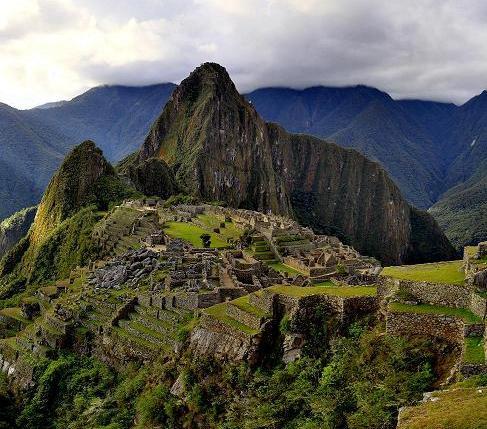The Inca Machu Picchu is one of the most important tourist attractions that Peru has, many tourist come see the sanctuary and to learn more about this incredible place. Machu Picchu was declared Protected Natural Area by the Peruvian government, in 1981, due to the enormous cultural attractions and natural landscapes that the Sanctuary has. The citadel of Machu Picchu is located northwest of Cusco, and it is important, because in addition to its archaeological value, has a great variety of ecosystems.
The citadel of Machu Picchu is one of the most famous and important archaeological sites in the world. It covers an area of 5 Km² and it has 2 430 meters above sea level, in the Urubamba River Valley. Machu Picchu is considered a masterpiece of architecture and engineering. It is one of the most popular destinations in the world, there are many books that have been made about the sanctuary and not only for its architectural and landscape features but also for the mystery that it has. The Historic Sanctuary protects a number of biological endangered species and several establishments Incas.
The weather is warm and humid during the day and cool at night. The temperature ranges between 12 and 24 degrees Celsius. The area is generally rainy, especially between November and March. The rains, which are copious, rapidly alternate with periods of intense sunshine. The recommended months for visiting Machu Picchu are the months of May and June are the months as more benign. Always carry an umbrella or raincoat, sunscreen and bags to protect camera equipment.
Overall, the day is hot and the night is cold. The visitor should be prepared for these violent fluctuations. Ideally, in a small backpack carry a wool sweater, gloves and jacket windbreaks. During the day you can be with a cotton shirt and comfortable pants to move around easily. In the dry season (May to November) the sun forced to wear sunglasses, hat and sunscreen.
Be sure to also bring water. During the rainy season (December to April) is advisable to wear rubber boots to walk because the floor gets very slippery. Through rain, it is also preferable to store personal belongings and documents in a plastic bag inside the backpack. It would also be appropriate to always carry an extra shirt.
For the warm climate of Machu Picchu, there is an abundance of insects and mosquitoes, which are presented in greater numbers on sunny days. Insect repellent are recommended.
If you are going to do the Inca Trail to Machu Picchu, you must bring sleeping bag, backpack, utility knife, first aid kit, bottled water. The climate is changing along the way. The day can be quite warm and sunny, dry during the first two days, and a little wet in the third and fourth day. In the first two campsites (Wayllabamba and Pacaymayo) often is very cold at night, while the third night is warmer. The rainy season begins in late November to the last weeks of March. The rains can sometimes be quite strong. Rain can make the road a little more difficult, on the other hand, landscapes benefit from the rain as they get very green.
The scenery and landscapes also change along the walk. In the first two days the landscape is andean with rugged mountains, glaciers, forests and streams. In contrast, the third day the vegetation is more tropical looking more like a tropical forest. Along the way you may see llamas, hummingbirds, hawks, lizards and sometimes deer.
The number of passes to hike the Inca Trail is limited to 500 per day (about 200 tourists and 300 guests and staff) and you can not make the trip independently, or hiring a guide. If you want to make the trip is really important to book in advance with a travel agency or preferably an operator. For high season (May to September) it is advisable to book at least 3 months in advance to guarantee a space in the path of the trail. Permits are sold only once, once all places have been booked, NO trekking operator can offer a space on the Inca Trail. There is no system with a waiting list. All spaces are personal and non-transferable and even if someone would cancel, no one else could take that space. Even in the low season you should book as far in advance as possible. Remember that the Inca Trail is closed in February each year, in order to receive proper maintenance.
Note that the majority of travel agencies offer services of tents, porters, food, sleeping bags. It is also important to wear a plastic poncho or rain jacket, especially in the months of November to March. We recommend that if you do the Inca Trail, spend at least 2 days in Cusco or somewhere similar altitude, this so that you are acclimatized and ready for the trail and have no problems with altitude.
|
|

